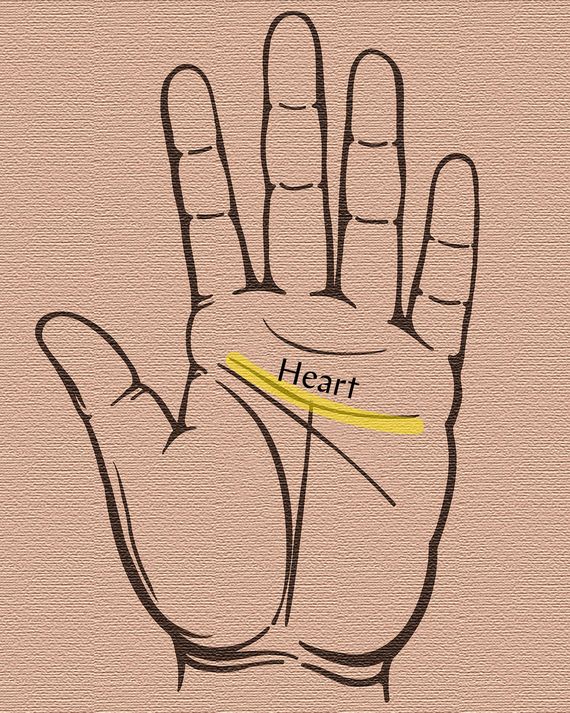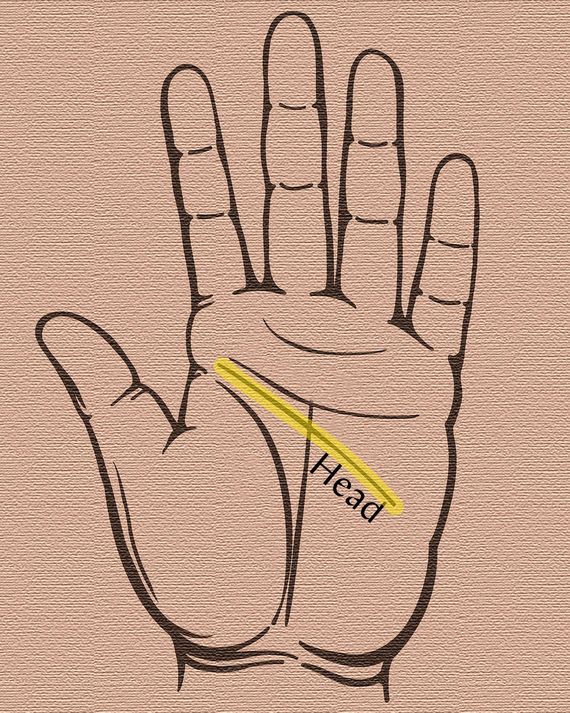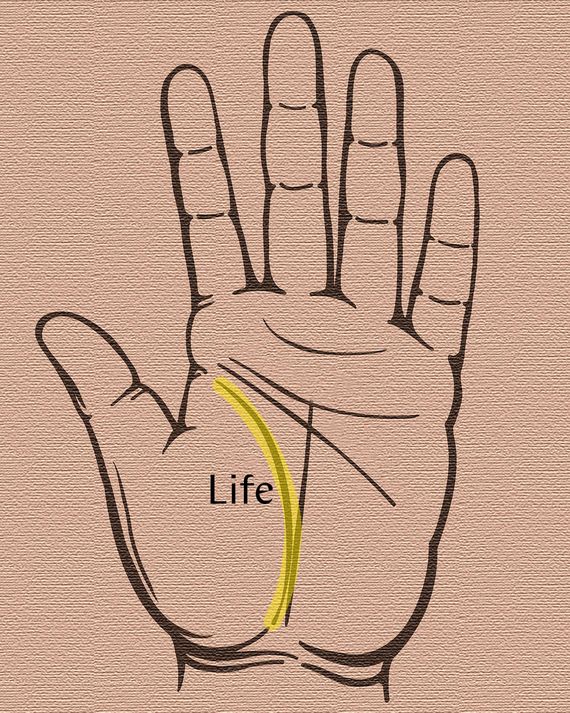
Look at your palms: How many lines do you see? How fine or deep are they? Which way do the fingerprints whorl?
In a palm reading, each of these features is said to signify something specific about your personality (at least according to those who believe in the practice). Some skeptics insist that palm reading, like tarot and astrology, amounts to little more than guesswork. And even those who perform palmistry — the work of interpreting the lines and forms on the hand, which is believed to have originated in India — will likely say that, while it can uncover some truths about your personality, the practice cannot give you a direct look at what’s coming down the pike.
“When I look at your hands,” Kay Packard, director of the American Academy of Hand Analysis, told the Cut, “I can tell you what behaviors are likely to show up, but I’m not going to say when you’re going to have a child or when you’re going to get married or when you’re going to get divorced.”
In order to understand any of what may be written on your hands, though, you need to be able to navigate their topography. Below, the basics.
Hand Shape
In palmistry, every hand is said to fit into a particular shape, aligned with one of the four elements: earth, air, fire, or water. Similar to the way that multiple astrological signs can coexist in one person’s zodiac chart, it’s supposedly possible for multiple elemental influences to be present in a single palm.
Earth hands, according to Packard, feature square palms with fewer lines, albeit deep ones. “Earth is very practical, reliable,” she says. “Earth-handed people carry the weight of the world on their shoulders.” They may also tend to be less concerned with emotion than with getting things done. Above all, they like to work.
Fire hands, meanwhile, may be found on highly “charismatic, magnetic” people. They are characterized by a somewhat “irregular palm … marked like Zorro came in and put sword marks all through the hands,” Packard says. Fire-handed people have lots of deep lines on their palms, she explains, and tend to be highly creative — more attuned to fun than to details.
Air hands are rectangular, with palms that are taller than they are wide and straight, upright fingers. “Air-handed people are analytical, rational, reasoning, and good critics,” Packard says. “They can appear aloof (or flighty) because their minds are in the air collecting and disseminating information.” These types can be somewhat sarcastic, she adds, but they value fairness.
Finally, water hands are characterized by lots of lightly etched, “baby-fine lines,” according to Packard. They also have narrow palms, with long fingers. Water-handed people may be “very emotional and sensitive and nurturing,” she says, potentially with a tendency to “get swallowed up into somebody else’s problems, because water likes to fill a container that’s put in front of it.” Water hands supposedly speak to compassionate, adaptable, and receptive, if not impractical, personalities.
The Heart Line
When you think about palmistry, there are likely a few lines that spring to mind — the head line, the life line, and the heart line. (The big three, if you will.) Although some people might want a palm reading to answer their burning romantic questions, like when they will finally find love and if they must do it online, if their partner is cheating on them, or when they will finally have sex, the heart line simply shows “love style.” Packard says: “How you like to relate to other people, and how you wish they’d relate to you. Ideally, everyone learns from their heart line that it’s not about how they are accepted, but how you accept yourself.”
The heart line lives at the top of the hand. According to Packard, there are a few different trajectories it can take. It can curve up from the edge of the palm under the pinkie, toward the index finger, sometimes indicating a “caring, giving, empathetic” person in relationships, Packard explains. If it curves up dramatically toward the middle finger, that may suggest a passionate person who is focused on their desires, goes after what they want when they want it, “and expects others to know what they want, too,” Packard says. “They say it out loud. They’re very me-oriented.”
A flatter heart line, Packard adds, could indicate “a rational, romantic element” in a person’s approach to interpersonal relationships — someone thoughtful and considerate, perhaps with a tendency to think intensely about feelings. “You have an internal judgment committee going on 24/7,” Packard observes of flat-heart-lined people, who may seem somewhat aloof.
Ellen Goldberg, a teacher of tarot and palmistry and the co-author of The Art and Science of Hand Reading: Classical Methods for Self-Discovery Through Palmistry, prefers to refer to heart lines of lesser depth as “shallower” or “weaker” lines. “[Lines] are channels for the life force, and if they are deep and clear, then whatever part of the psychological self or the body the line represents will be in tip-top shape,” Goldberg says. “The weaker the line, the weaker the part of the self it represents.”
A short heart line — one that stops under the middle finger and does not curve up — may mean “that person is more of a hermit,” Packard notes. Someone who “just likes to be alone. They love to do work … they’re productive, they have projects, they have a nonnegotiable need for sanctuary time.”
As you run your index finger (or a crystal pendulum) an inch or two above the heart line of your dominant hand, psychic practitioner and the author of A Little Bit of Palmistry: An Introduction to Palm Reading, Cassandra Eason, recommends leading with intuition. Ask yourself what you feel — whether that’s happiness, uncertainty, a sense that decisions need to be made, a rush of emotion, or a blockage. “Allow images to appear in your mind or words about the true inner state of your emotions as they are now,” Eason says, paying close attention to “any surges or lifelessness.” If you’re feeling a lack of energy during your reading, there’s a high chance you might be trying too hard to please others, she notes.
The Head Line
You might think of your head line as your “supercomputer,” Packard suggests, in that it can reflect your “mental processor and how we compartmentalize information.” This is the line that starts on the edge of your palm, underneath the index finger, and slices across the middle. A clear, flat, and long head line, Packard explains, may mean the hand owner is clear-thinking — someone who “loves to calculate and integrate ideas.” A short head line, meanwhile, doesn’t necessarily say much about the person’s intellect. It may simply mean, according to Packard, that they are more impulsive in their decision-making, instinct driven, or less prone to overthinking things.
Packard calls a long head line — one that comes within an eighth of an inch of the other side of the palm — “a super-synthesizer or an octopus brain,” because “all eight arms need to be in use and all of the suction cups on each of the legs or arms need to be in use. They’re collecting information, collecting data, and synthesizing.” In other words, it signals a hyperactive mind that needs continual engagement. On the other hand, a long head line that frays at the end may mean the person’s “thought systems don’t really stop. They just keep going around and around, and it’s really hard for them to formulate a conclusion.” If the head line wraps around the opposite side of the palm, that’s “related to being outside of time,” like an old ghost. This might point to a person who has a “connection with people who have gone on to the other side, and they can have communication with those people or God, [like] a real spiritual marking. “But,” Packard cautions, “they can have trouble tending to details of the material world.”
The Life Line
The life line, Packard says, is “the least understood line, which has a bad rap for indicating the length of life for someone.” The life line cannot do this, Packard says; she reads it, instead, as an indicator of “how we’re anchored into the earth, it’s like a root system.”
“It tells me about someone’s vitality system,” she adds.
According to Packard, a vibrant person with high vitality might have a “really round … really robust” life line that curves around the Venus mount (the bulge under your thumb). To Packard, the life line speaks about connection to others: family, friends, loved ones. With that in mind, a short life line may signal independence or a lack of groundedness. A flat life line is often found in people who work hard, and may signal a need to “pump some air into the bicycle tires,” metaphorically speaking — seeking out ways to boost vital energy if they have been feeling depleted. Packard interprets a short or very faint life line as signaling a person who’s “super-scattered” and may be experiencing “internal tension, which feels very chaotic.” Her recommendation: “to reground in nature, and with family and friends.”
Another possible configuration is the “death in a foreign land” life line, which splits about an inch or an inch-and-a-half above the wrist. Its owner, Packard says, may “seek stimulation beyond their home.” That could mean “traveling, learning about and living with different cultures, or exploring higher levels of consciousness.”
Once you’ve got a basic understanding of the hand types and lines down, Eason recommends monitoring your palms weekly or when you have a decision to make, as you’ll often notice “the energies … ahead of the physical evidence.” Using the traditional palmistry teachings will help you guide your practice, Eason notes, but “checking in on what is going on beneath the surface helps you keep in touch with your own inner psychic and psychological clock.”
In conclusion …
Even for palmistry beginners, Goldberg emphasizes maintaining a sense of wonder in your burgeoning practice. “It’s quite amazing, when we think about it, that the self has put so much information about us right on our hands,” she notes. “We can see where parts of ourselves are weak, and where we have extra energy to draw on. This is why the hand is often called ‘God’s road map.’”
Once you’ve mastered the fundamentals, ambitious palm readers or those who really want to wow their friends at parties might begin factoring in more granular details that influence palm meaning — finger shape and position; various mounds, named for Roman gods; or smaller lines branching off of the main ones. Much to unravel, much to think about. Go forth, palm readers!Once you’ve mastered the fundamentals, ambitious palm readers or those who really want to wow their friends at parties might begin factoring in more granular details that influence palm meaning — finger shape and position; various mounds, named for Roman gods; or smaller lines branching off of the main ones. Much to unravel, much to think about. Go forth, palm readers!







